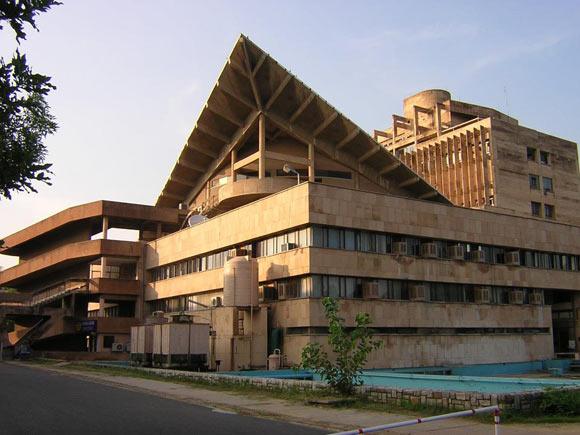 | « Back to article | Print this article |
Not a SINGLE Indian university among world's top 200!
But should we be surprised at all? Indian universities have NEVER made it to the top of the annual QS rankings.
The Indian Institute of Technology (IIT) Delhi appears almost as a blip on the radar... at number 222, having dropped t-e-n places from last year's 212.
Meanwhile at the very top, British and American universities slug it out as Harvard claims Cambridge's spot pushing the British university down to number three even as Massachusetts Institute of Technology tops the list second year in a row.
US-based Massachusetts Institute of Technology (MIT) and Harvard University today topped an authoritative list of the world's top 200 university rankings that did not figure any educational institutions from India.
The Indian Institute of Technology, Delhi comes in way down at No 222, dropping from 212 last year, in the QS World University Rankings that is predictably dominated with US universities.
MIT grabbed the top slot and Harvard at No 2, pushing Britain's Cambridge University to No 3.
As part of one of its most comprehensive global reviews, the 800-strong annual ranking includes 11 Indian institutions in all with the IITs leading the charge – IIT Bombay at 233, IIT Kanpur at 295, IIT Madras at 313 and IIT Kharagpur at 346.
"The stable performance of Indian institutions is a reflection on the country's efforts to internationalise its higher education system. However, it is clear that more efforts are needed in the area if the country's institutions wish to feature more prominently at the top of global rankings," said Ben Sowter, head of research at QS, a British firm specialising in education and study abroad.
"In a country where education is prized above all matters and competition for a coveted place at one of the country's top institutions is high, students need a broader comparison of domestic universities. QS is currently working closely with Indian institutions in a pilot ranking project for the 'BRICS' nations, which is due to be launched later this year," Sowter added.
The annual rankings take into account the subject range, research results and academic reputation offered by 3,000 institutions internationally.
In the list of the top 50 universities in Asia, IIT Delhi and IIT Bombay come in at 38 and 39 followed by IIT Kanpur at 51 and IIT Roorkee at 66.
The Hong Kong University of Science and Technology tops the Asian rankings followed by a number of Chinese, Japanese and Korean institutions.
Pakistan's Quaid-e-Azam University ranks at 119 and the National University of Sciences and Technology in Islamabad is at 120 -- both ahead of the University of Mumbai which is at 140.
The best-performing countries in terms of number of universities ranked in 2013 include the US (144); UK (69); Germany (42); France (40), followed by Japan (38).
The UK now boasts six of the world's top 20 universities with Edinburgh and King's College, London edging into the top 20 slot alongside Cambridge, UCL, Imperial and Oxford in the top 10.
The researchers report that the average undergraduate tuition fees for the global top 10 universities are up to a record high of around USD 34,000 per year, nearly double the 2007 average of USD 18,500. With the rupee going through a period of extreme volatility, an elite world-class education for an Indian student may be at its costliest ever.
The 'QS World University Rankings' is made up of six indicators: academic reputation (40 per cent), employer reputation (10 per cent), faculty student ratio (20 per cent), citations per faculty (20 per cent), international students (5 per cent) and international faculty (5 per cent).
This year, 62,094 academic and 27,957 employer responses contributed towards the results, making the survey one of the largest of its kind in the world.
Click here for the list of the top 20 universities in the latest annual QS World University Rankings.
